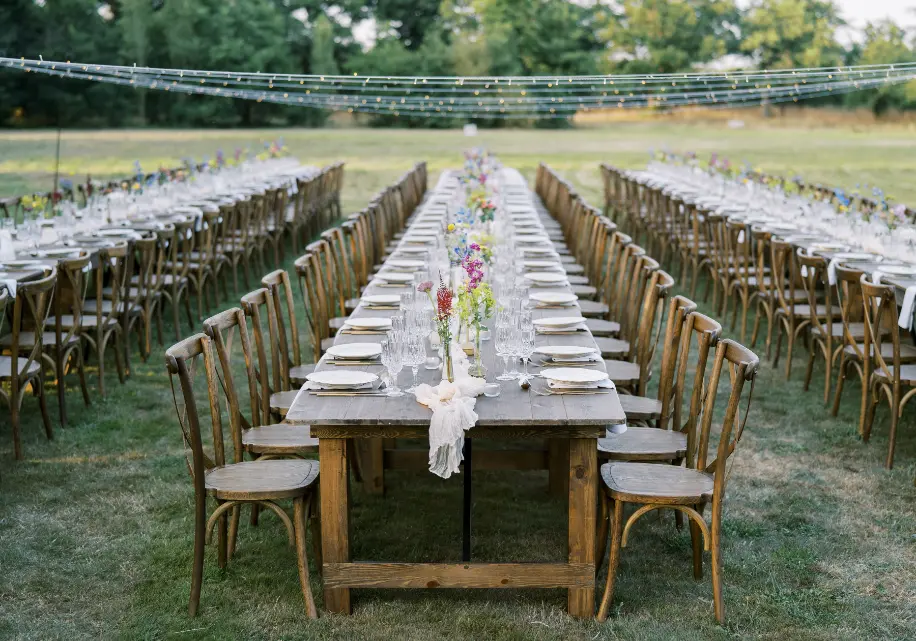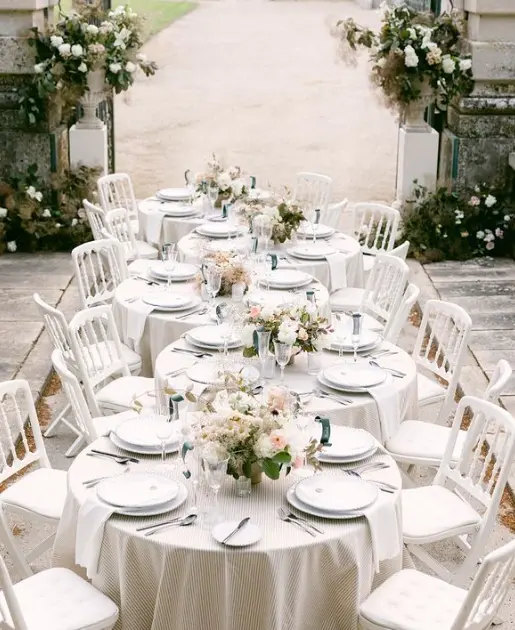Only a few months left before your Big Day? It’s time to start thinking about your Wedding Seating Plan! Your Wedding Planner offers some tips for the perfect layout
Creating your Wedding Seating Plan
When planning your wedding, you go through each step one by one and solve problems as you go. And we can’t stress this enough: the seating plan is a rather tricky task. You’ll feel relieved once you’ve finalized your guest list
Once you have received all the responses from your friends and family and you know exactly who will be attending your Wedding, you will need to seat them at the tables for your meal. You don’t have to assign each guest a specific seat, but you do need to decide who will sit at which table. If this task seems daunting, remember that you can be creative with the table layout. Depending on the reception venue you have chosen and the number of guests attending, you can adjust the table layout, which may make it easier to create your seating plan.
Which tables to choose for your Wedding Banquet
You can choose from several types of tables: round, square, rectangular, oval, serpentine, in different sizes and dimensions… This allows you to match the size of your tables to the groups you want to create for your wedding meal

Round Tables
Commonly used for many wedding receptions, they offer a great deal of flexibility in terms of positioning and can be easily adapted to the dimensions of your reception hall
Here are the most common dimensions:
- Diameter 122cm – 6 seats, or 7 at most
- Diameter 150cm – 8 seats, or 9 at most
- Diameter 180cm – 10 seats, or 11 at most
It is important to consider the comfort of your guests around their tables, so it is not necessary to seat the maximum number of guests around each one
Rectangular Tables
Increasingly used at Weddings, especially for long tables, rectangular tables allow you to bring your guests together and create less of a group effect than round tables can. You can opt for a single long table running across your entire room, or, depending on the number of guests, create long parallel tables. We recommend a maximum of 20 to 30 guests per length to maintain a friendly, convivial atmosphere
Rectangular tables are also available in different widths:
- 70cm wide
- 80cm wide
- 90cm wide
We always recommend choosing 90 cm wide tables, as they offer your Wedding guests extra comfort and allow you to arrange your decorations between the place settings in a comfortable and attractive way
U-shaped tables
This option is less common at Weddings, but it can also be an alternative for small groups while highlighting the head table in the center
Serpentine Tables
This model is very trendy at the moment, mainly for intimate weddings with a maximum of 50 guests. There are curved tables that can be placed next to each other to create this serpentine effect. Round tables of different diameters can also be used to create this very romantic and chic format

Of course, there are many possible layouts and arrangements fro your Wedding Banquet, as well as reception venues! So it’s best to measure your reception room carefully and imagine the scenario that best suits the number of guests, your desires, and the subtleties of family relationships
Once the first groups have been assigned to your tables, you can then choose the specific seats to allocate to them. It is important to do this so that each of your guests can easily find their seat when they sit down, but also for your caterer, in case of special diets. The caterer will then know where to serve the dishes adapted to each diet or allergy. It is therefore very important to provide your caterer with the seating plan, the number of guests, and the number and dimensions of your tables. They will be responsible for laying the tables and will therefore need to provide the ideal tablecloths in the right sizes
Bonus tip: Whatever layout you choose, don’t forget to leave space for your caterer’s service teams to move around, as they are key to ensuring that the service runs smoothly. Always allow at least 1.5m between each table
The Head Table
The most important table, the Bride and Groom’s table, the Head Table! This table will be yours, where all your guests will be able to see you, and from which you will also be able to see all your guests
Depending on the number of guests, you can make sure that the head table is not too large, which could create a sense of separation
For your wedding meal, you can choose a rectangular or oval head table for 8 to 12 guests, or simply a table identical to those of your guests
You can also choose not to have a head table, especially if you have long tables, and sit side by side in the middle of the tables
Position the head table at the back of the room, with your guests facing you, or have your head table in the middle of the other tables… Again, there are no rules, so do what suits you best!
Some couples opt for a table for two, preferring to move from table to table to meet their guests during the Wedding meal
Who should you choose to sit next to you at your head table?
Usually, head tables tend to be reserved for witnesses, bridesmaids, and even close friends rather than parents. Don’t worry too much about it, but make sure to seat parents or siblings close to the head table so as not to hurt anyone’s feelings
rendez-vous., your Wedding Planner will be delighted to assist you in this stage of creating your perfect seating plan for your Wedding day. With her professional tools and experience, you can enjoy this moment with complete peace of mind. Looking forward to speaking with you soon!
